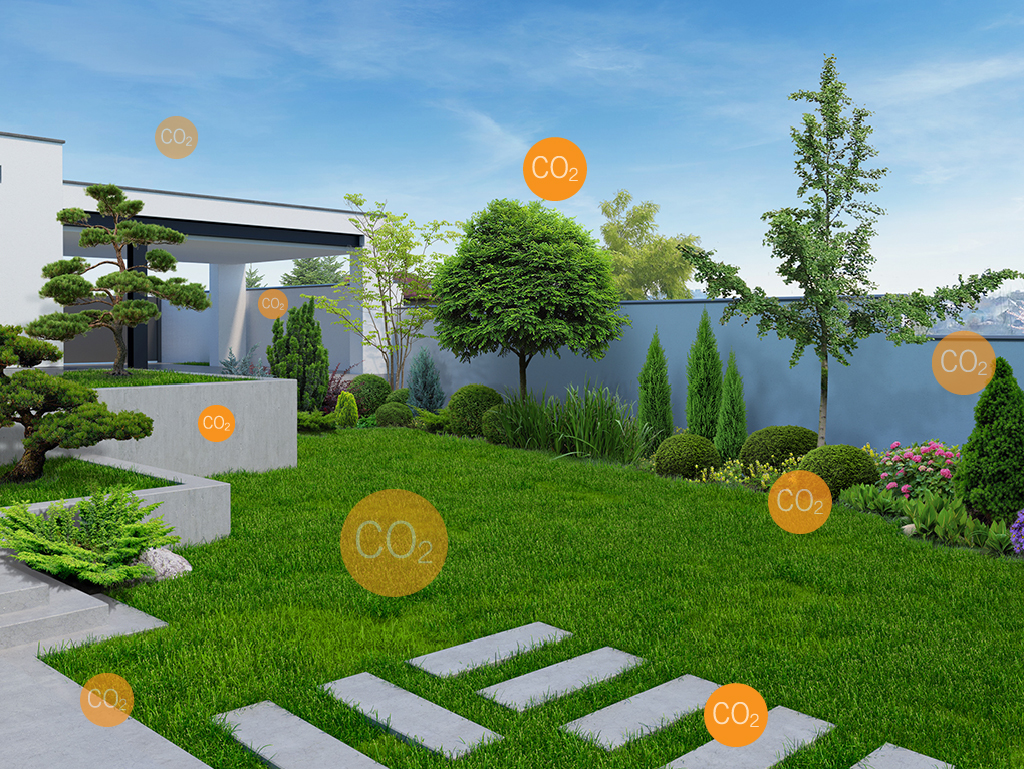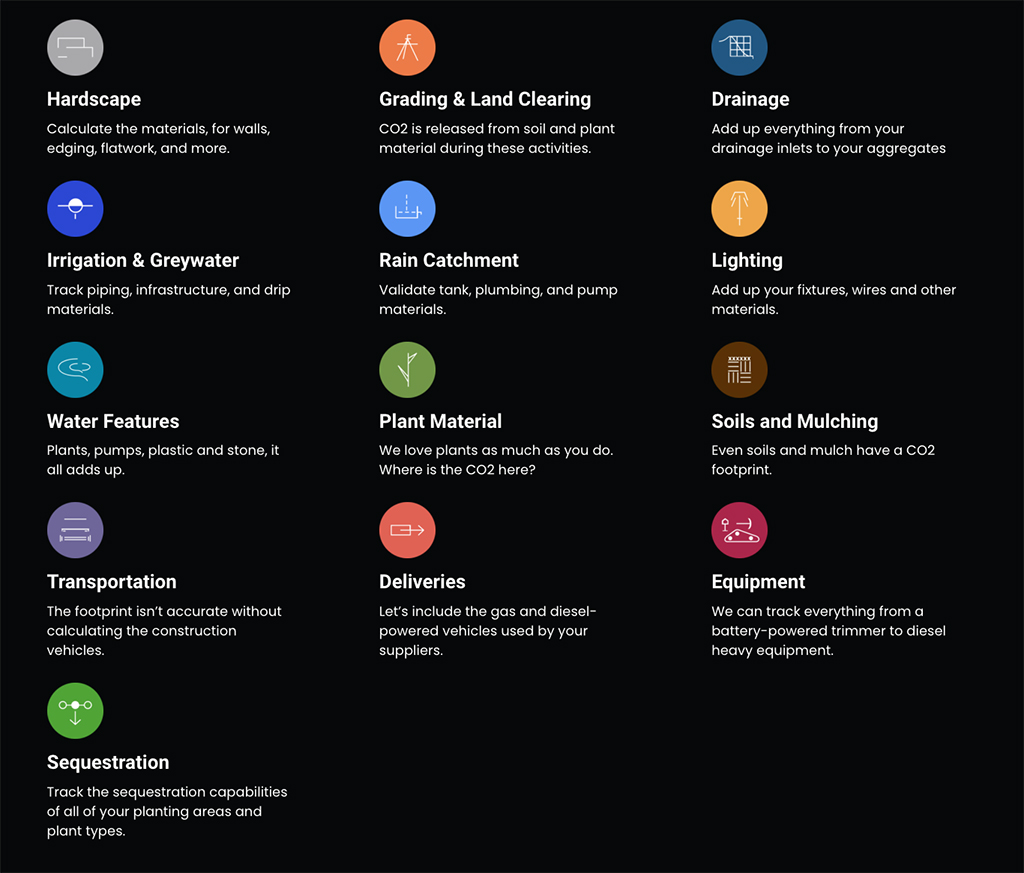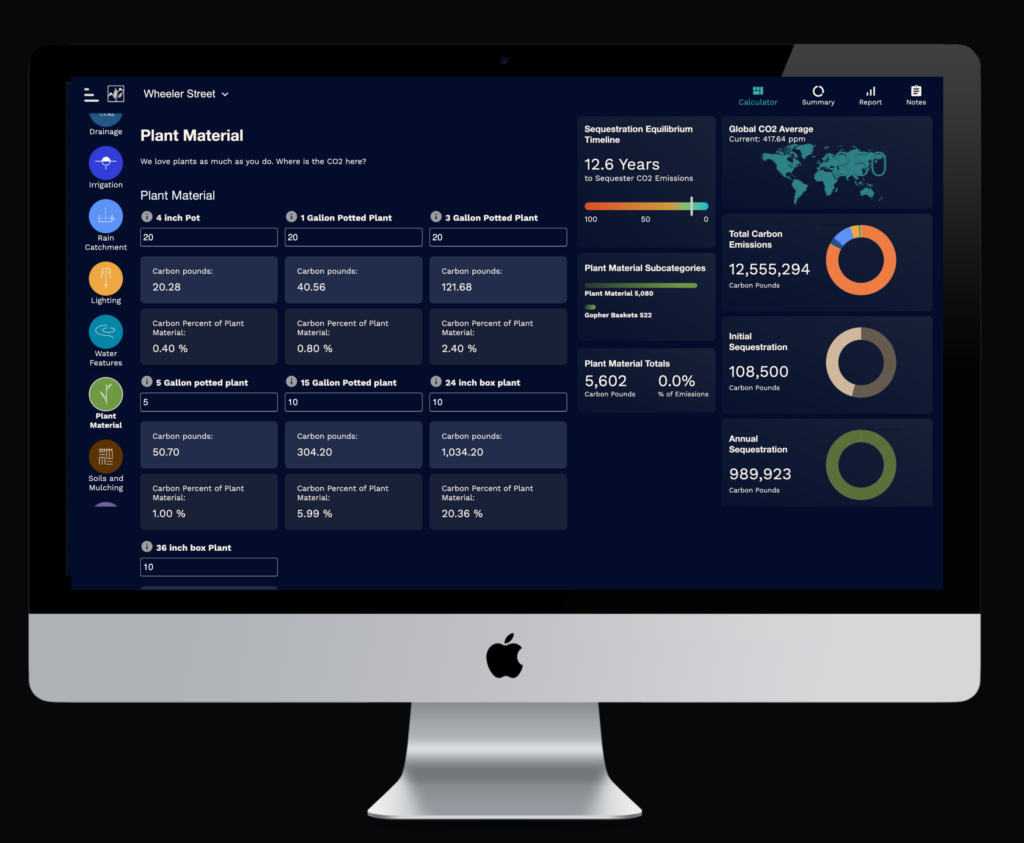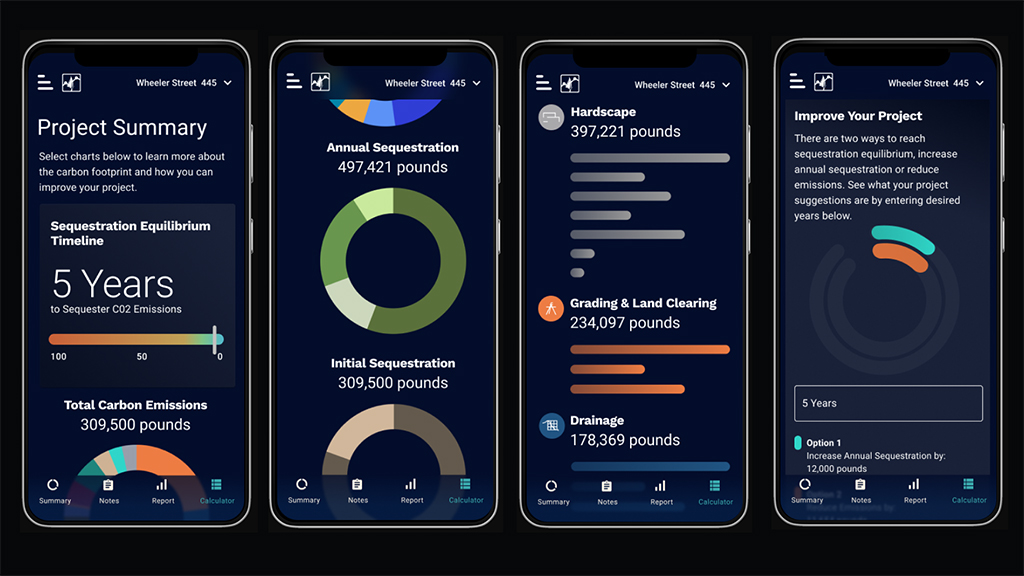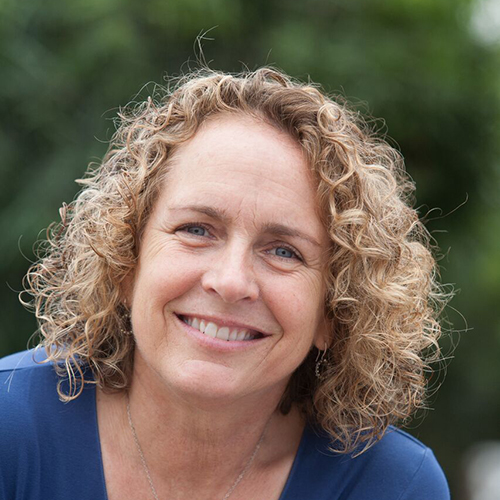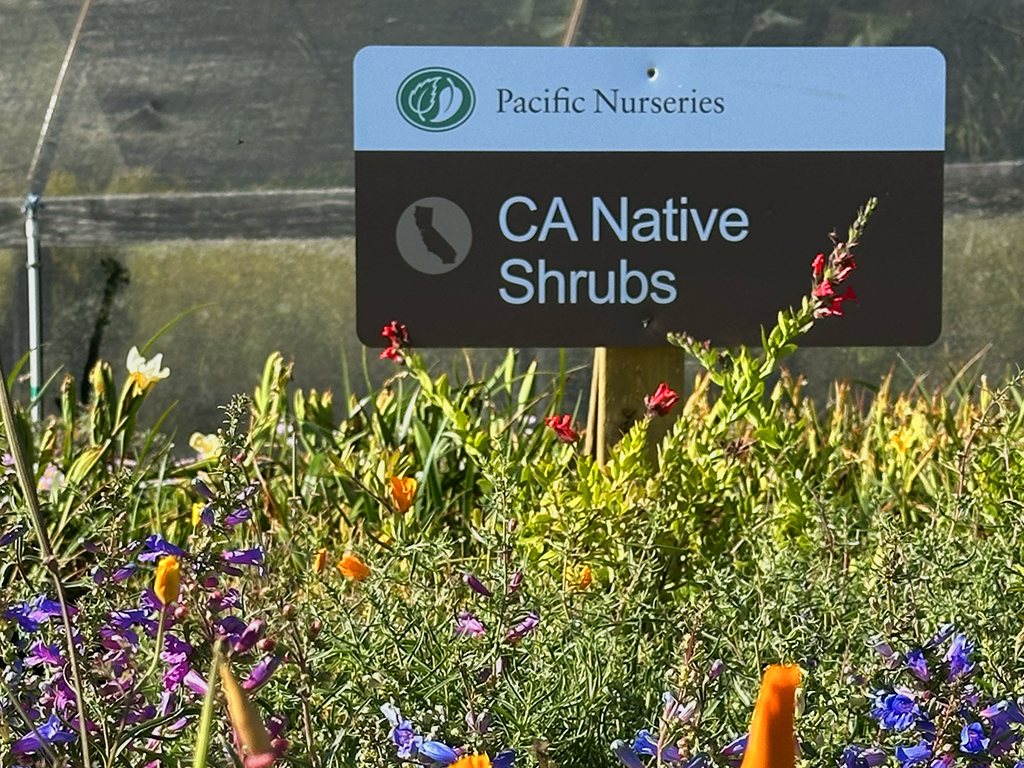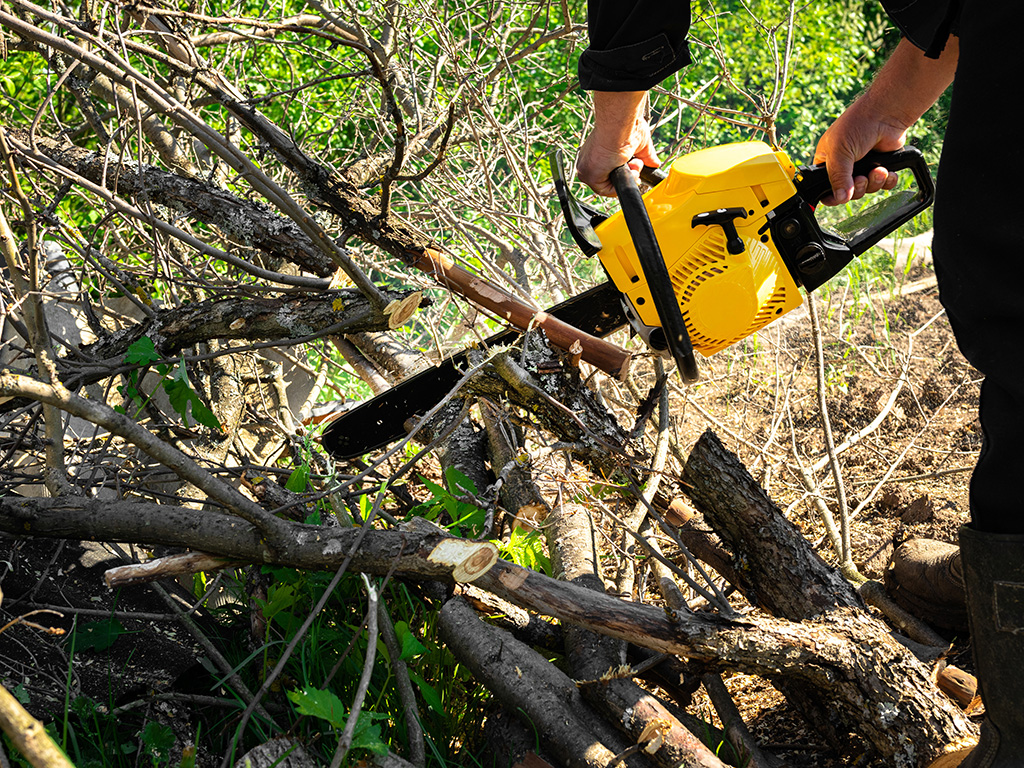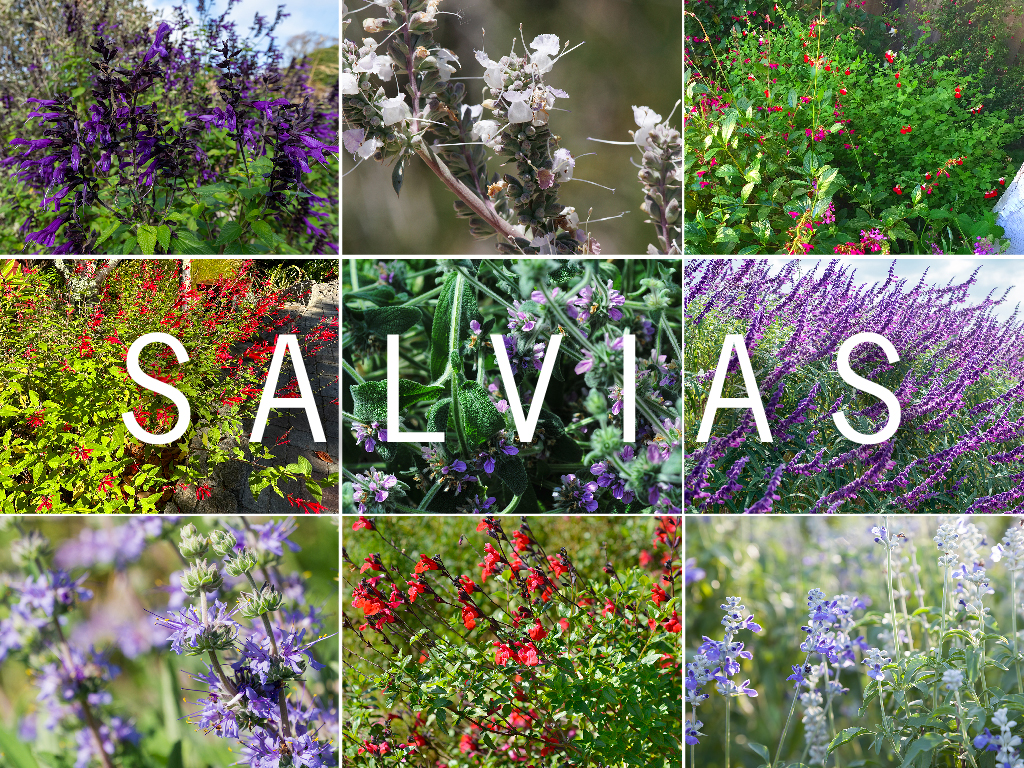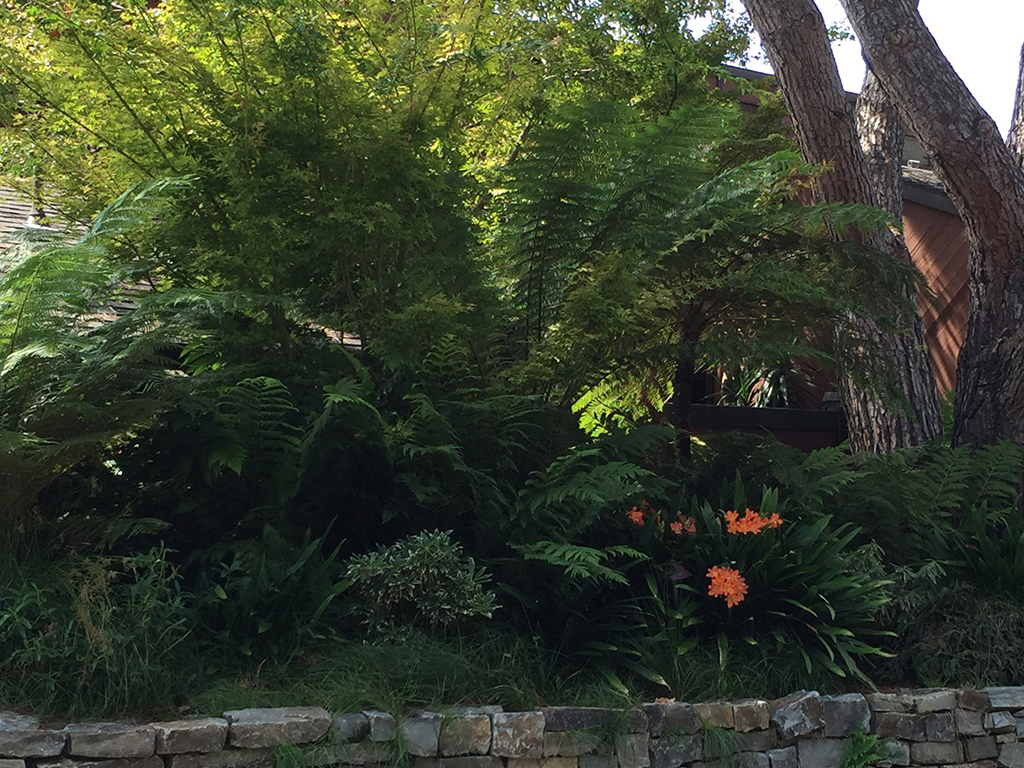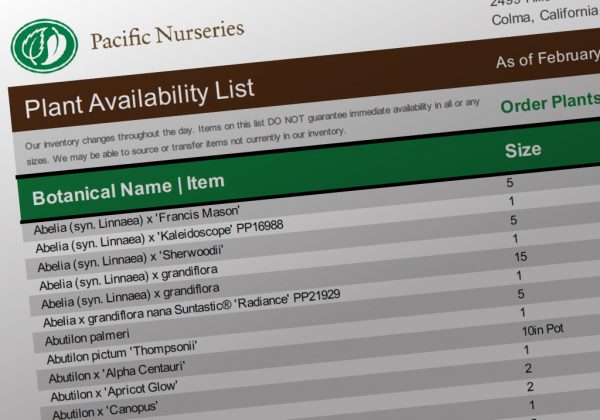As Bay Area Landscape Professionals, our responsibilities include more than just making attractive landscapes and satisfying clients. We also have to consider if our landscapes are reducing the impact of climate change, or if they’re adding to the crisis.
Recent research from the UN Intergovernmental Panel on Climate Change | IPCC reports that human-induced climate change is causing dangerous and widespread disruption in nature. The result is now affecting every area of the Bay Area—and the planet.
In order to address this growing threat, urgent and accelerated action is required to make rapid, deep cuts in greenhouse gas emissions and reduce carbon dioxide additions to the atmosphere.
Recent research from the UN Intergovernmental Panel on Climate Change | IPCC reports that human-induced climate change is causing dangerous and widespread disruption in nature. The result is now affecting every area of the Bay Area—and the planet.
In order to address this growing threat, urgent and accelerated action is required to make rapid, deep cuts in greenhouse gas emissions and reduce carbon dioxide additions to the atmosphere.
What’s the big deal with carbon?
Carbon is present in the atmosphere, in the ground, in oceans, and in living organic materials. It’s normally exchanged between these natural reservoirs through a range of living processes.Unfortunately, human activity has dramatically increased the amount of carbon that is released into the atmosphere every year. The resulting imbalance and added burden to natural cycles is one of the primary factors contributing to an increasingly warmer Bay Area climate.
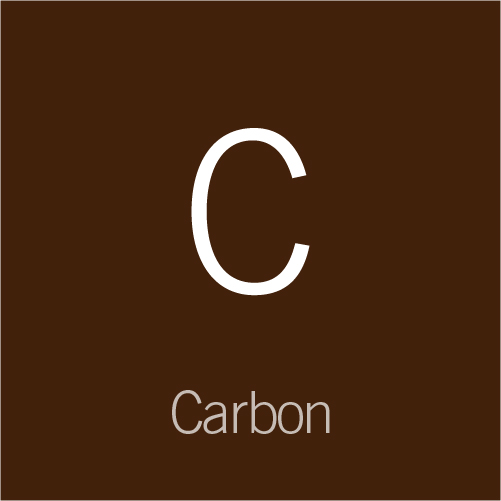
Carbon | C is the fourth most abundant element in the universe after hydrogen, helium, and oxygen. Carbon is also a building block of life. When combined with oxygen and hydrogen, carbon can form many groups of important biological compounds including sugars, lignans, chitins, alcohols, fats, and aromatic esters, carotenoids and terpenes.
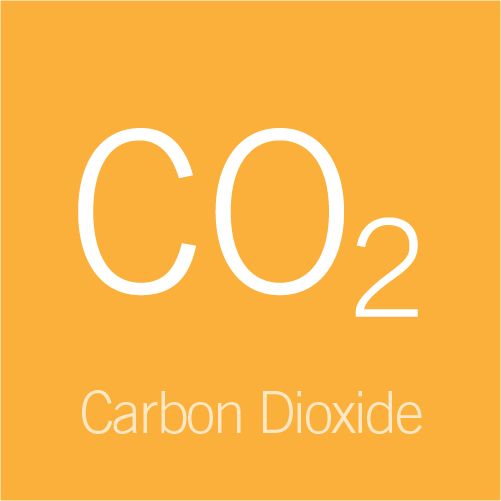
Carbon Dioxide | CO2 is a colorless, odorless essential atmospheric gas. Comprised of two oxygen atoms and one carbon atom, it is exhaled by animals and can be produced by burning and decaying plant matter. It’s also absorbed by plants during photosynthesis. It functions to filter out some sun rays which keeps the planet warm.
Carbon, on the Periodic Table of Elements, and Carbon Dioxide are distinctly different from one another | Pacific Nurseries
A natural carbon sequestration process out of balance
Through the biological process of carbon sequestration, trees and plants take carbon dioxide out of the atmosphere through photosynthesis, store the carbon in their tissues, and then send carbon through roots to the soil.Once there, carbon can be stored long-term. The chart below provides an overview of how this natural process works.
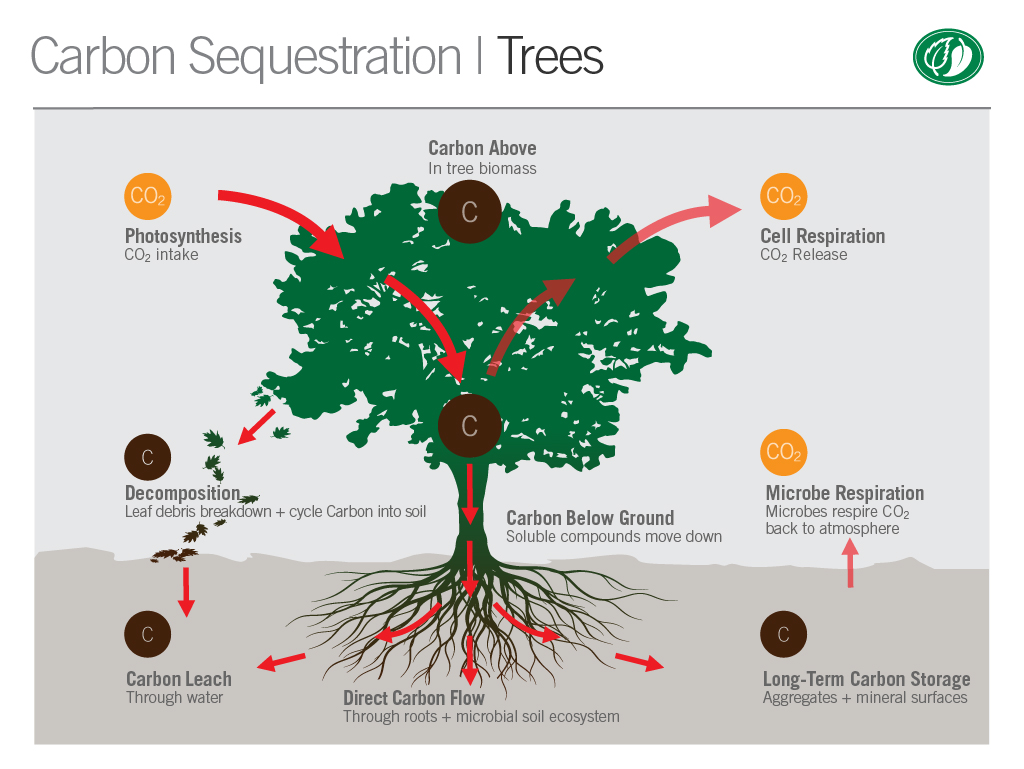
Trees to the rescue
Trees and soils are becoming widely recognized as critical landscape assets that can help to avert the disastrous consequences of climate change. Research also indicates that trees and soils have the potential to mitigate up to 21% of US carbon emissions every year.All trees have a robust capacity to store carbon while growing. In fact, the national average carbon storage density for an urban forest is about half of what a natural forest stores.
Trees reach their peak sequestration capacity between 10-45 years after planting. Research also reveals that all tree species will continue to absorb CO2 from planting to mature age.
And once trees are planted, it’s essential that they remain in place so that they can continue to do their natural work of capturing carbon.
Tree carbon sequestration rates are influenced by a number of factors including:
- | species
- | size
- | age
- | environmental temperature
- | and more
A study from USDA Forest Service and Syracuse University identified a number of good choices for urban trees that effectively sequester carbon. Roll over any of the images below to identify the specimen name.
Plan for landscape reducing impact of climate change
When perennial woody shrubs and trees are part of an integrated ecosystem that includes undisturbed and managed soils, they enhance the opportunity for carbon capture, removal, and storage for the long term.For example, the wider and higher a hedge, the more carbon it will generally sequester. And when woody roots remain in place over time, they can help to keep that carbon locked up in the soil below for years.
In planning your landscape, consider these best practices for reducing the carbon contribution of your project:
Source plants from local providers
Choose native plants
Layer plants + perennials vertically
Group + mass plants in clusters
Include range of plant sizes
Choose plants with root depth diversity
Integrate nitrogen-fixing grasses
“We get that climate change is real. We just need better insights, tools, and techniques to do something about landscape reducing the impact of climate change.”
John Merten | Studio Green
John Merten | Studio Green
Carbon Sequestration in Soil
Effectively addressing climate change is dirty business. That’s because soils can hold more carbon than landscape vegetation and up to four times the amount of carbon stored in the atmosphere.As a Landscape Pro, consider these measures to increase the amount of carbon that you’re capturing in soil:
- | Reduce foot + machinery traffic compaction
- | Cultivate at shallower depths
- | Chop + incorporate green manures
- | Add compost + organic matter
- | Incorporate biochar
- | Boost microbial + fungal composition
- | Plant appropriately + thoughtfully
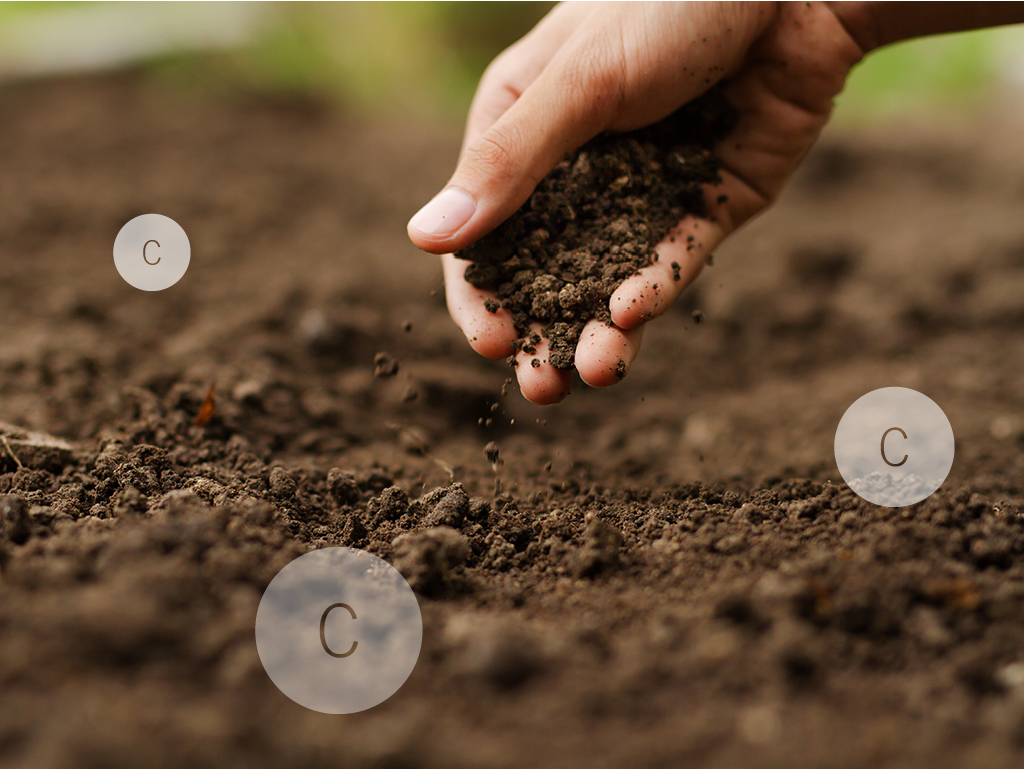
Start making a difference with better tools
The landscape industry is evolving and there’s a growing need for new and better tools that can effectively address the climate change threat.The BOND | CO2 Calcualtor is one emerging tool that enables Bay Area Landscape Pros to evaluate the carbon impact of every one of their projects.
Developed by Rick Taylor and his team at sandbox LCC, this innovative app provides measurable data for you to see and understand the real-time CO2 impact of your project. With these informative insights, it’s possible to guide your project to improve carbon sequestration volumes and reduce your overall environmental impact.
This dynamic, interactive online calculator will enable you to identify and reduce the most carbon costly components of a landscape project. The result gives you the power to be a part of a climate solution and avoid being an unaware contributor to the accelerating climate crisis.
Track your project’s complete carbon cycle
With the power to calculate emissions at a granular level—from a 50,000-gallon water tank to individual drip emitters—the BOND | CO2 Calculator provides a detailed view of all emissions in your project.Just by entering key data of your landscape project into 4 different categories, you can now calculate how much carbon your project will sequester every year. This easy-to-use tool does all of the math and determines how long it will take to get to carbon neutrality.
With each project input organized by logical categories, you can now see the big picture of landscape reducing the impact of climate change in real-time with clear, easy-to-understand graphics.
Leverage points for change and improvement become apparent with this level of granular detail. The calculator is designed to provide an objective analysis of your project plan and empower you to make better decisions within your project’s constraints—all while meeting your objectives.
By integrating a powerful new tool like the BOND | CO2 Calcualtor into your workflow, you can also differentiate your services from other landscape competitors.
Get a desktop or mobile actionable view of how to make more climate-friendly decisions | Pacific Nurseries
“Many Landscape Pros are uncertain about how to address climate change. But what’s clear is they all need to start taking action to reduce carbon dioxide contributions in our landscapes.”
Debbie Catalano | Pacific Nurseries
Debbie Catalano | Pacific Nurseries
Take the BOND | CO2 Calculator for a test drive
For the skeptics that need proof, you can test drive the BOND | CO2 Calcualtor with a single project. Just sign up for a free account online.You can add more projects and upgrade your account anytime by subscribing to the right level of service that meets your needs. To get started, just follow these steps:
- | Sign up online
- | Add a project
- | Enter your data | materials + infrastructure
- | Calculate your total carbon picture
- | Discover areas to offset
- | Adjust + recalculate
- | Become part of a climate crisis solution
Avoiding your contribution to landscape reducing the impact of climate change is not optional
It’s a fact that addressing climate change and reducing carbon emissions is a complex and evolving business. But what’s clear is that we all need to work with nature rather than fight against it.If we are to have a sustainable and inhabitable planet, Bay Area Landscape Pros need to have their landscapes reduce the impact of climate change through a more balan
ced carbon cycle.
By using some of the proven practices above and new, innovative tools like the BOND | CO2 Calcualtor, we can all make individual progress to a better future.
“We have a responsibility as leaders, designers, and builders to provide solutions that are both good for the earth and humanity.”
Rick Taylor | Founder, sandbox + BOND CO2 Calculator
Rick Taylor | Founder, sandbox + BOND CO2 Calculator
Ready to make climate-friendly + carbon-neutral landscapes with you
As both a grower and a plant broker, we’re ready to work with you to provide just the right trees, plants, ground covers, native grasses, and shrubs that will make your project a carbon-sequestering success.Order your plants online or we can provide an Estimate for one item to an entire installation. Just attach your plant list to our convenient online form.
To learn more, contact any of our experts online or just call 650.755.2330.
As Co-Founder of Pacific Nurseries, Julie Baldocchi focuses on sharpening Pacific Nurseries’ marketing strategy and website to help Pacific Nurseries deliver more value to Bay Area landscape professionals. To connect with Julie online, just send her an email.

